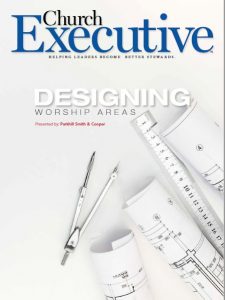
By Scott A. Nelson, AIA, LEED AP BD+C
Data is changing the way our world operates.
 Need convincing? Simply type “data” into Google’s search bar, and 0.47 seconds later you will have more than 1.7 billion results of data’s impact. From Facebook’s collecting / harvesting / selling of user data, to data breaches and scandals that keep Chief Data Officers up all night, to the advertisers willing to spend millions to acquire data to better target their ads.
Need convincing? Simply type “data” into Google’s search bar, and 0.47 seconds later you will have more than 1.7 billion results of data’s impact. From Facebook’s collecting / harvesting / selling of user data, to data breaches and scandals that keep Chief Data Officers up all night, to the advertisers willing to spend millions to acquire data to better target their ads.
My question to you is this: Are you using data to impact the way you develop church facilities?
An overlooked opportunity
Ask a church leader about his or her church facility plans, and often the conversation will begin with describing “what” they want or feel that they need. We need a new worship center, larger lobby with a café and indoor playground, more classrooms for kid’s ministry, new student ministry space, more parking spaces.
Ask about their decision-making process to arrive at these needs, and often you find the simple reality that they lack open spaces (i.e., worship seating, classrooms, parking spaces). So, therefore, we need to build more space.
When digging deeper to understand “why” they arrived at this decision, their puzzled look gives way to responses that indicate that their decision-making was based on emotions, and you begin to hear phrases like, “We feel like this would…”, “We wanted to double the capacity,” and “We always wanted to…”.
Contrast these responses to any of the Fortune 500 companies today when asked about their decision-making process to build a new office or factory, add staff or add a product line. Assuredly, you will hear the word “data” mentioned a handful of times.
Data-driven decision-making is being used to help leaders make plans based on facts rather than emotions. So, what does data-driven decision-making look like for the church? It’s about capturing data to make informed decisions as it relates to ministry balance and financial balance.
 Capturing data
Capturing data
Data tends to be readily available to churches, given the multitude of church management software programs that track everything from worship attendance, to education attendance, to financial history — including giving and expenses. Each of these data sets provide valuable insight into a church’s history that helps to set demographic trends and baselines that can aid in projecting future growth patterns.
In addition to your own data, peer analysis can provide valuable insight into the data-driven decision-making process, as you are able to compare how your church’s metrics compare with other churches. Data sets from peers can include location, number of campuses, congregation size, ministry / programming philosophy, and operating budget, among a host of other factors. The challenge with peer analysis is determining who is your peer and which data sets are applicable / relative.
With the data assembled, the focus shifts to scenario modeling that seeks to create ministry and financial balance.
 Ministry balance
Ministry balance
Regardless of your ministry philosophy (Sunday school, life groups, home groups and more); worship style (traditional, modern, blended); geographic location (east coast, west coast, “fly-over” state); or church doctrine (Baptist, Methodist, Non-denominational and so on), the following principle prevails: a church will not grow to need the space that it does not provide.
“Space,” in this context, relates to worship center seating, education classrooms and parking spaces. All three of these spaces must be in balance to allow growth to be sustainable. Building a large worship center with plenty of seats, but not having enough classroom space to allow parents to drop off kids or park the car, means your campus is unbalanced. In this example, growth becomes prohibited by the capacity limiter of education or parking. As such, it would be better to strive for ministry balance — in other words, to build

fewer seats so that you can accommodate additional education and parking.
Financial balance
It’s more than just dollars — it’s about financial balance in the context of capacity, cashflow and time. Unless you are Apple or Amazon with the capacity to pay cash, you will likely have to consider financing options (interim and / or long-term debt). This requires understanding how banking institutions view debt capacity for churches and how you plan to cashflow both construction and / or the long-term debt service.
The specifics of the financial metrics are beyond the scope of this article, as my intent is to help you understand the need for ministry and financial balance, to be viewed in concert with one another rather than in isolation.
Data-driven decision-making is revolutionizing the way church leaders are planning for the future, as emotions are supplemented with the facts of ministry and financial balance.
Scott A. Nelson, AIA, LEED AP BD+C is Principal, Director of Community Practice at Parkhill Smith & Cooper.


